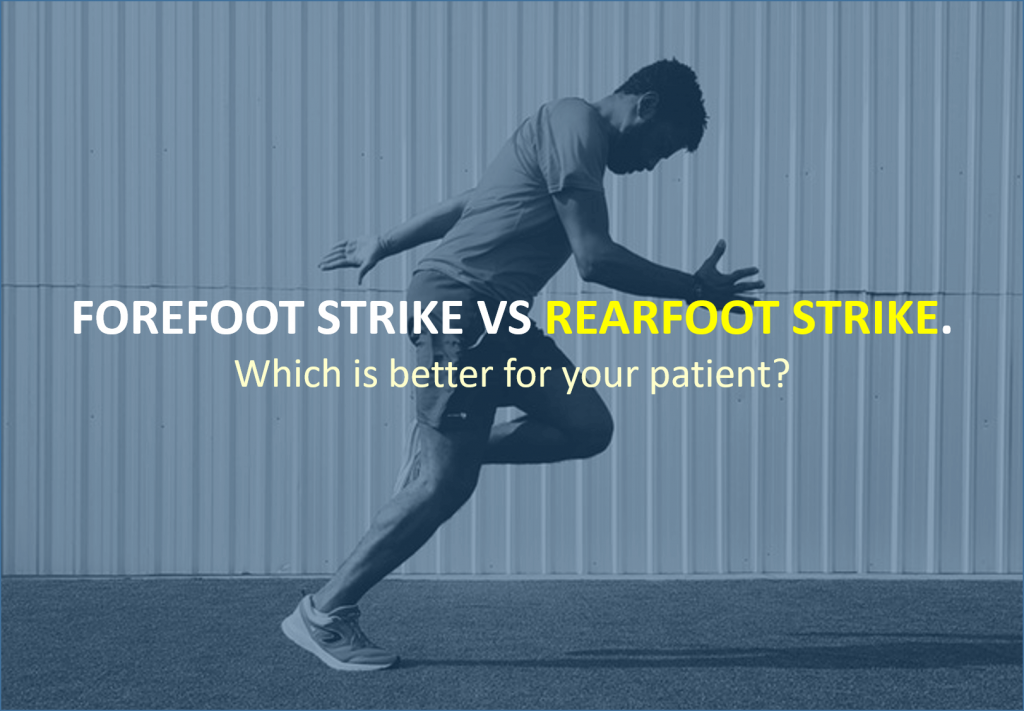
In my experience, foot strike pattern is by far the most discussed topic in running analysis. There have been a number of researchers recommending the forefoot strike patterns while some studies suggest that there is no strong evidence to support this claim.
CLINICAL RELEVANCE OF FOOT STRIKE PATTERNS
Different strike patterns show different 3D stress in joints of the lower extremity. In such a scenario, choosing a suitable footstriking pattern for a runner is necessary to prevent further damage or injuries caused by inadequate biomechanical load.
RECENT DEVELOPMENTS ON CHOICE OF FOOT STRIKE PATTERN
The maximum peak force is the maximum loading on a joint when the Ipsilateral leg is in the stance phase during running.The loading rate is the rate at which the force on a particular joint increases during the stance phase of the Ipsilateral leg.
RESULTS OF THE STUDY
For both strike patterns, the vertical components of the MPF and LR were significantly greater than their AP or ML components. This is due to the fact that the vertical ground reaction forces are often 2-5x the body weight. In the vertical axis, FFS was generally associated with a greater MPF but significantly lower LR in the ankle, knee and hip joints when compared with a rearfoot strike pattern.
The AP components of MPF and LR were significantly lower for FFS in the knee joint but significantly greater in the ankle and hip joints. The ML components of MPF and LR tended to be greater for FFS but mostly did not reach a level of significance.
CONCLUSIONS AND SUGGESTIONS
FFS and RFS were associated with different 3D stress patterns in the ankle, knee, and hip joint, although there was no global advantage of one strike pattern over the other. The individual assessment for the ankle, knee and hip joints demonstrated that FFS seems favorable for patients with unstable knee joints in the AP axis and RFS may be recommended for runners with unstable ankle joints.
As suggested by the study, determining the foot striking pattern and quantifying the foot inclination angle (whether it is too high or not) can make a lot of difference in the rehabilitation programs that you design for your patient.
Gait analysis is a tool you can use to assess the foot strike pattern and foot inclination angle of your patient. It is also very useful in analyzing a number of other parameters like foot pronation, pelvic drop, dynamic knee valgus etc. Although a running analysis software can make this process fast and accurate, you can also start simple by analyzing videos of the running motion of your patients made using your phone.
Feel free to reach out to me at hans.siddharth@auptimo.com for having a discussion on this!